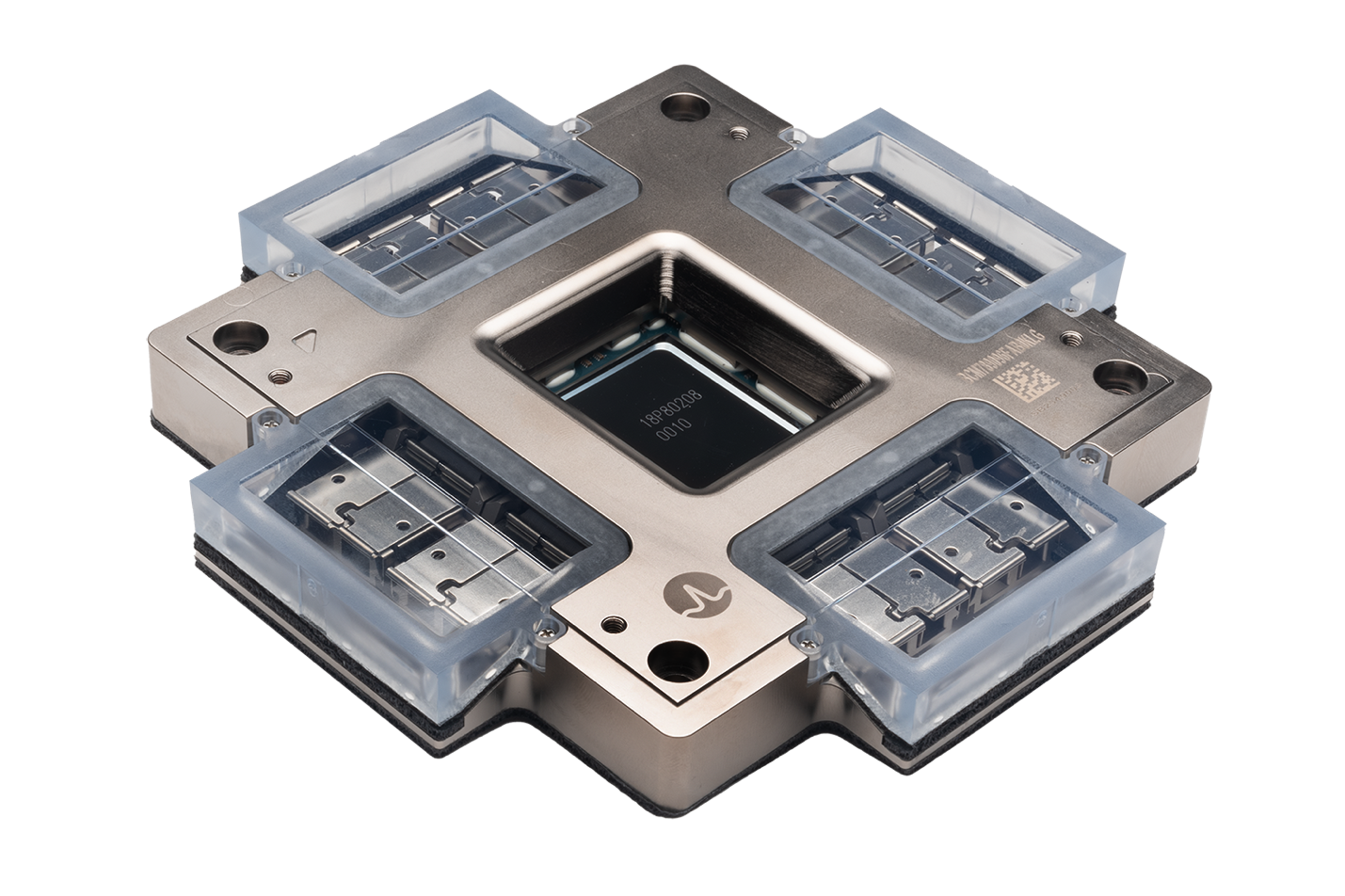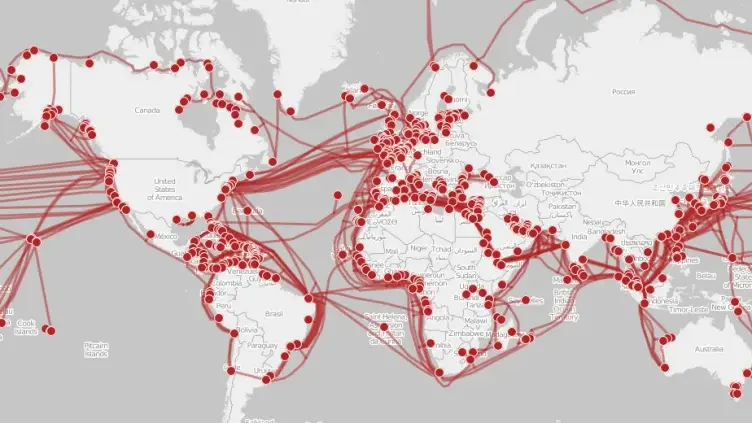As an employee who has always valued the importance of environmental responsibility, I am proud to be part of CXtec, a company...
As an employee who has always valued the importance of environmental responsibility, I am proud to be part of CXtec, a company that prioritizes both ecological stewardship, sustainability, and technological progress. At CXtec, we are committed to offering IT solutions that are not only safe, secure, and reliable, but also environmentally responsible. We understand the urgent need to safeguard our IT infrastructure for the future by implementing green practices. This includes prolonging the lifespan of IT hardware, minimizing electronic waste, and supporting a circular economy.
Our flagship program, equal2new®, epitomizes our dedication to these principles. In an era where climate change is a pressing global concern, equal2new® helps reduce the carbon footprint associated with the IT hardware market by offering high-quality pre-owned network equipment. With over 40 years of experience, CXtec has established itself as North America's largest secondary-market network hardware provider, serving diverse sectors such as healthcare, education, and manufacturing. This initiative not only helps our clients meet their IT and environmental sustainability goals but also contributes to a significant reduction in environmental toxicity.
The environmental impact of the IT industry is substantial, with the sector's carbon footprint estimated at 730 Mt CO2-equivalents, equating to 1.4% of total global emissions. To put this into perspective, this is comparable to the annual carbon emissions of over 160 million cars, highlighting the significant contribution of IT to global greenhouse gas emissions. Furthermore, IT equipment across data centers, transmission networks, and connected devices consumes about 4% of global electricity, exacerbating greenhouse gas emissions. By extending the usable life of IT hardware and encouraging the use of refurbished equipment, CXtec plays a pivotal role in mitigating these environmental challenges. Our efforts in responsible IT asset disposition (ITAD) and third-party maintenance services help prevent unnecessary hardware upgrades and ensure proper recycling of obsolete equipment, thus reducing e-waste.
At CXtec, we understand that environmentally sustainable business practices offer numerous advantages, including improved brand perception, regulatory compliance, and customer satisfaction. Our commitment to Net Zero carbon reduction is evident in our track record: over 4.8 million IT hardware units refurbished and repurposed, reducing landfill waste by more than 16.8 million pounds and greenhouse gases by over 23.4 million pounds. To put this into perspective, this reduction in greenhouse gases is equivalent to removing approximately 5,000 cars from the road for an entire year. Through our comprehensive IT lifecycle services, we not only support our clients' technological needs but also champion the cause of environmental stewardship, underscoring the belief that technology can enhance our lives while safeguarding the planet.
Transitioning to a more focused discussion, this industry insight delves into the significant impact of fiber optic structured cabling, provided by our CABLExpress division, on the performance and efficiency of hyperscale and enterprise data centers, ultimately aiding companies in achieving their efficiency and environmental goals.
The Impact of Fiber Optic Structured Cabling on Hyperscale and Enterprise Data Center Performance and Efficiency
In the quest for mission-critical performance, data centers often face the challenge of balancing efficiency with ecological responsibility. There is a compelling argument for how fiber optic structured cabling enables data centers to achieve both objectives simultaneously. By analyzing its impact on uptime, energy efficiency, cooling efficiency, capacity utilization, security, and cost efficiency, we will explore how fiber optic cabling serves as a mutually beneficial solution for meeting performance goals while advancing environmental objectives in hyperscale and enterprise data centers.
In the dynamic landscape of modern data centers, the pursuit of mission-critical performance must go hand in hand with a commitment to ecological responsibility. It's a delicate balance that many organizations strive to achieve. However, with fiber optic structured cabling, this balance becomes not only achievable but also a mutually beneficial proposition. CABLExpress delves into the transformative power of fiber optic cabling, showing how it empowers data centers to meet their performance goals while simultaneously reducing energy consumption, minimizing waste, and promoting longevity. It's not just about achieving success; it's about doing so in a way that benefits both the organization and the planet.
Fiber Optic Structured Cabling Overview
Fiber optic structured cabling systems comprise optical fibers, connectors, patch panels, and other components designed for high-speed data transmission over long distances. Unlike copper cabling, fiber optic cabling uses light signals for data transmission, offering advantages like higher bandwidth, lower latency, and immunity to electromagnetic interference (EMI).
Impact on Uptime and Availability
Fiber optic cabling ensures high availability and uptime within data centers due to its reliability and robustness. Encased in a protective sheath, fiber optic cables exhibit superior resistance to environmental factors such as moisture, temperature fluctuations, and electromagnetic interference. This inherent durability makes fiber optic cables less prone to signal degradation and cable breaks caused by external conditions compared to copper cables. While both fiber optic and copper cables require proper handling and installation to prevent damage, the physical properties of fiber optic cables provide added resilience against environmental stressors, enhancing their reliability and contributing to uninterrupted data center operations.
Influence on Energy Efficiency and Environmental Impact
The adoption of fiber optic cabling contributes to improved energy efficiency by reducing power consumption and cooling needs. With lower attenuation rates and less power required for signal amplification compared to copper, fiber optic cables result in reduced energy consumption over long-distance transmissions. This is advantageous for hyperscale data centers that require massive amounts of energy to support their extensive computing infrastructure, as well as enterprise data centers seeking to reduce operational costs and environmental impact. By minimizing energy consumption, fiber optic cabling helps data centers achieve their ecological goals and reduce their carbon footprint.
Additionally, fiber optic cabling offers a longer lifespan compared to copper, primarily due to its higher bandwidth capacity. This longer lifespan translates to significant business impacts in terms of total cost of ownership (TCO) and environmental benefits. With fiber optic cabling lasting longer before requiring replacement, there is less need for frequent cable replacements, resulting in reduced material consumption and waste generation. This not only lowers operational costs associated with maintenance and replacement but also minimizes the environmental impact of manufacturing and disposing of cabling materials. Overall, the longevity of fiber optic cabling contributes to a more eco-friendly approach to data center infrastructure.
From an environmental perspective, the materials used in fiber optic cables versus copper cables also play a crucial role. Fiber optic cables are made from silica (silicon dioxide), which is the primary constituent of glass, and is abundantly available in the Earth's crust. Silica is typically derived from sand, which is mined and then processed into the pure glass fibers used in fiber optic cables. The extraction and processing of silica are less environmentally damaging compared to the mining and refining processes required for copper.
Copper, on the other hand, is a finite and limited resource. The mining of copper involves extensive extraction processes that can result in significant environmental degradation, including habitat destruction, soil erosion, and contamination of water sources due to the release of heavy metals and toxic by-products. Moreover, the refining process for copper is energy-intensive, contributing further to its environmental footprint.
Fiber optic cables are more environmentally friendly in several ways. The production process for fiber optics generates fewer emissions and less pollution compared to copper. Additionally, because silica is more abundant and easier to source sustainably than copper, the overall environmental impact is lower. Fiber optic glass is also more sustainable than copper in terms of resource availability. As a renewable resource, silica ensures that fiber optic production can continue without depleting essential materials, whereas the finite nature of copper makes its long-term sustainability questionable.
Enhancing Cooling Efficiency
Efficient cooling is essential for maintaining optimal operating conditions within data centers. Fiber optic cabling produces less heat than copper, reducing the thermal load on cooling infrastructure. Moreover, its smaller form factor facilitates better airflow management and cable routing, optimizing cooling efficiency. This is particularly beneficial for hyperscale data centers, which house thousands of servers and require sophisticated cooling solutions to prevent overheating and ensure continuous operation.
Enabling Scalability and Capacity Utilization
Scalability is crucial in data center design to accommodate growing data volumes and workloads. Fiber optic cabling provides the scalability and bandwidth capacity needed for rapid infrastructure expansion. Supporting high-density connectivity and faster data rates, it maximizes capacity utilization without compromising performance. This scalability is essential for both hyperscale data centers, which experience exponential growth in data processing demands, and enterprise data centers that need to adapt to changing business requirements and IT environments.
Impact on Security and Compliance
Data security is paramount in data center environments. Fiber optic cabling offers inherent security advantages, including data encryption and reduced susceptibility to eavesdropping. Unlike copper cables, which transmit electrical signals that can be intercepted with relative ease, fiber optic cables transmit data using light signals through glass fibers, making them significantly more difficult to tap into without detection. Any physical attempt to intercept fiber optic communications results in a noticeable signal loss or disruption, alerting administrators to potential breaches.
Furthermore, fiber optic cabling supports advanced encryption protocols at both the hardware and software levels, ensuring data remains protected during transmission. The absence of electromagnetic interference (EMI) in fiber optic systems also enhances their security profile, as there are no radiated signals that could be intercepted. Integrated with advanced security measures, such as intrusion detection systems and encryption at the optical layer, fiber optic links enhance overall security posture and ensure compliance with stringent regulatory standards. This is critical for hyperscale data centers handling vast amounts of sensitive data and for enterprise data centers subject to industry-specific regulations and compliance standards, such as HIPAA for healthcare or GDPR for data protection in the EU. By utilizing fiber optic cabling, data centers can achieve higher levels of data integrity.
In summary, fiber optic cabling not only offers superior performance and energy efficiency but also poses fewer environmental risks compared to copper. Its production involves less environmental disruption, and its abundant raw material source makes it a more sustainable choice for the future of data center infrastructure. By choosing fiber optics, data centers can reduce their environmental footprint and contribute to a more eco-friendly technological ecosystem.
Recent Posts
Introduction: A New Chapter in Optical Connectivit
Low-loss fiber connectivity is essential for...
Starting a data center hardware upgrade is a...
Posts by Tag
- data center (12)
- Fiber Optic Cables (11)
- Cabling (7)
- NETWORKING (6)
- Structured Cabling (6)
- Fiber Optic Cabling (5)
- Fiber Cable (4)
- Networking Cables (4)
- Fiber Cables (3)
- Hardware Security (2)
- IT Infrastructure (2)
- Port Replication (2)
- Sustainability (2)
- AI (1)
- Brocade (1)
- Carbon Offsetting (1)
- Data Security (1)
- FCOE Works (1)
- ICLs (1)
- IT Equipment (1)
- IT Network (1)
- IT infrastructures (1)
- POE (1)
- Switches (1)
- Tapped Holes (1)
- data centers (1)
- hardware (1)
- infrastructure (1)
- storage (1)
- strategy (1)
Popular Posts
Why does the gauge matter in my network’s racks?...
The internet may feel like an invisible, instant...
Introduction: A New Chapter in Optical Connectivit





